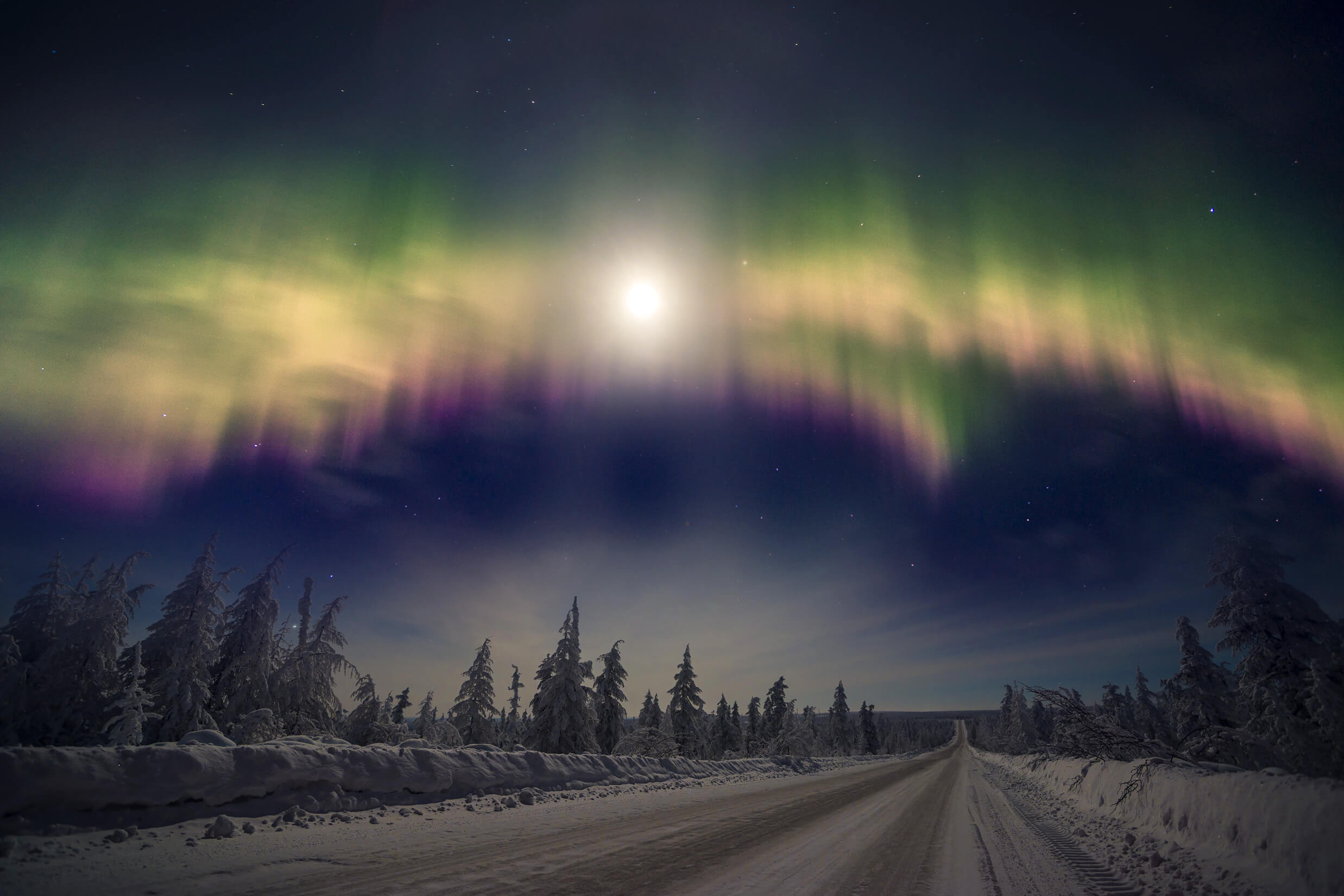A common concern from Northern Lights first-timers is that they will somehow miss the Aurora for one reason or another.
The most common question, of course, is about the full moon, since it is something that we are all acquainted with and see on a regular basis. Given the fixed duration of most travellers’ holidays, it’s no surprise that they want to guarantee an Aurora sighting if they can. But do you really need to worry about the moon ruining your view of the Northern Lights?
“Does the full moon lower my chances of seeing the Northern Lights?”
The impact that the moon will have on your Northern Lights viewing experience depends on two things – the phase of the moon and the strength of the Aurora itself. When viewing the Northern Lights, you will always be best to head out of the city to areas of low light pollution so that the night sky can be seen without obstruction. Because of this, you are likely to have an excellent view of the moon in whatever phase it is in. Should the moon be full, you will find that it casts bright moonlight across the whole night sky. While this can affect your view of the Aurora somewhat, the strength of the Aurora itself is a much more important factor. If the Aurora is weak, it can be muddied by the light of a strong full moon, but a weak Aurora can be a frustrating sight at the best of times – moon or none – nobody wants to spend their evening hoping that a faint green glow will pick up and transform into something more prominent. While a full moon can be powerful enough to drown out faint stars, when the Aurora is strong a full moon will only serve to compliment your views and make them all the more spectacular. One of the most picturesque views possible is to have the Aurora overhead while the full moon illuminates the mountains and landscape below.
“What other factors can affect my view of the Northern Lights?”
Another natural occurrence that can obstruct your view of the lights is clouds. Visions of fluffy white clouds on a blue summer sky may make you think them a friendly sight – the reality is that they are an aurora hunter’s worst enemy. The full moon is a thing of beauty in its own right that adds a wonderful effect to a strong Aurora display. Clouds, on the other hand, can only serve to get in the way. This is why seeking out clear skies is such an important factor in aurora hunting. In the secluded areas of the Arctic Circle you can travel out of the range of light pollution with relative ease, but out-racing the clouds in the sky is much more of a challenge. While very light cloud cover can add interesting contrasts to a Northern Lights display, a heavy cloud front can ruin your views completely.
A more technical factor that affects the Aurora is the solar activity of our sun. The sun’s solar activity follows a cycle of approximately 11 years. By measuring this solar activity we can chart and predict future solar events, like the solar flares and sunspots that help to create the Aurora display. The chances of seeing the Northern Lights correlate with these solar cycles and by studying them we can predict their intensity and frequency. During a solar minimumthis activity is at its lowest, but the lights can still be seen at places within Earth’s Aurora Oval, which covers Alaska, parts of northern Canada, Greenland, Iceland, northern Norway, Sweden and Finland. During the high-point of solar activity, the solar maximum, the Northern Lights can be viewed much farther south than normal; 2016 provided sightings in the United Kingdom, but historically there have been sightings as far south as Mexico.
Seeing the Northern Lights for Yourself
With so much to consider, it is easy to get lost in looking for the sweet spot among all the different factors. That’s why we’re here. As Northern Lights holiday experts we send you to the right place at the right time to experience the full natural majesty of the Northern Lights. We can work with you to design your own holiday itinerary to any of a number of destinations; we can even combine it with other exciting arctic activities, like whale watching or dog sledding. It’s easy to start – you can read more about our northern lights holidays or contact us directly for a no-obligation chat.
If you’re still not sure of just how the full moon can affect the Northern Lights, we’ll leave you with this fantastic shot of the two together:
Get in touch today
Contact one of our team for more information or to help get you a personalised quotation.

